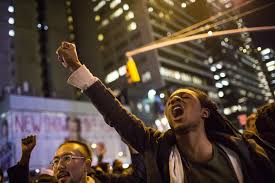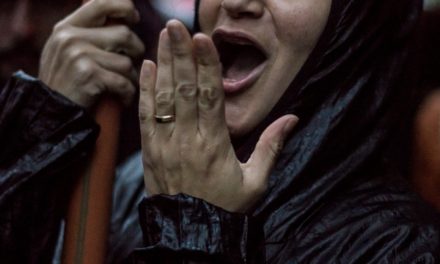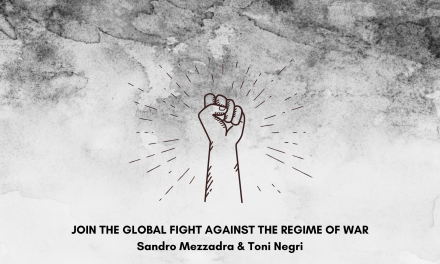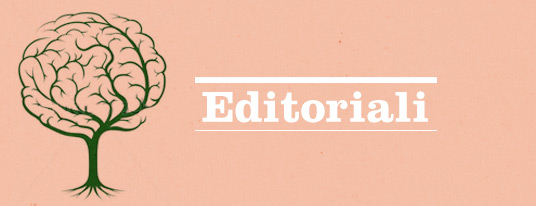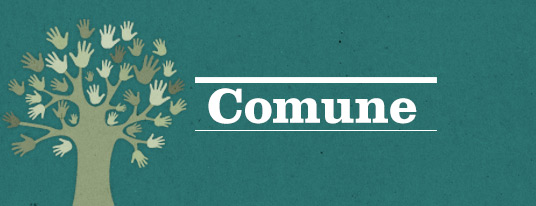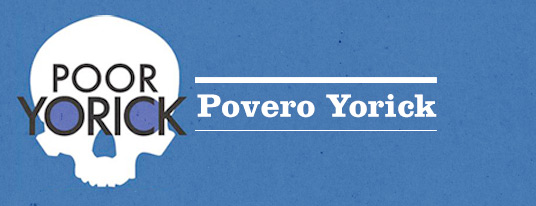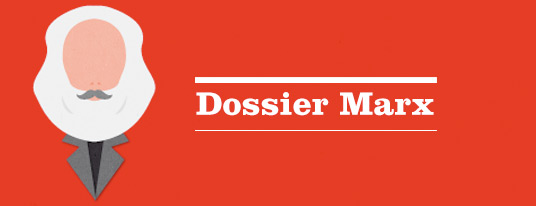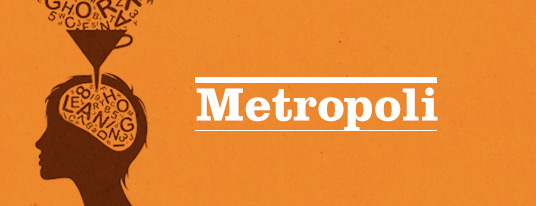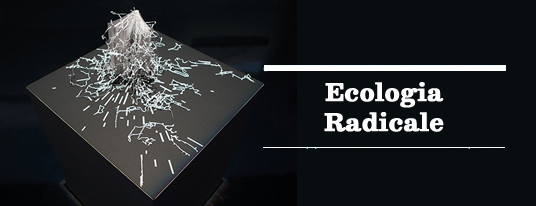by MICHAEL HARDT and ALVARO REYES.
Michael: One important and novel aspect of the wave of protests against police violence that emanated from Ferguson and spread throughout the United States is its racial composition. Not only have the protests focused on issues of racial injustice but also they have been led by people of color. Many white radical and liberal activists are involved – in fact, in some areas they form the majority – but people of color are at the center.
This is significantly different from the major US social movements of the last several decades. It was often lamented that relatively few people of color were involved in the movements that sprung up in response to the AIDS crisis in the 1980s and 90s (such as ACT-UP and Queer Nation), the alterglobalization and anti-war movements in the first decade of the century, and Occupy in this decade. Many of the white activists involved in these movements recognize the centrality of race in US politics and even sought participation of black and brown activists, but with little results. Beginning with Ferguson we have instead a movement centered on black people that brings in activists of all races, perhaps for the first time on this scale since the 1960s and 70s, when innovative black organizations like SNCC and the Black Panther Party created a pole that attracted militants of all races into their projects.
Alvaro: I think another aspect that I find important is that I see all of this as a generalized reaction to a very particular social context. That is, although much of the national narrative around this wave of protests that has engulfed the country was built around the case of Ferguson and the police killing of Mike Brown, given the reaction to the cases of Eric Garner, Tamir Rice, Akai Gurley, and John Crawford it’s clear that “Ferguson” has become the name for a moment of generalized intolerability regarding the incredibly violent state coercion directed at Black and Brown bodies through policing.
However, if we take into account the larger situation of Black and Brown communities, I think it is a mistake to reduce this moment to the issue of policing or police violence. Rather, I find this moment so incredibly powerful due to the fact that when you place these protests in the context of the prevalence of mass prison strikes in the last five years, the national movement against minimum wage work, and discontent with regard to the deportation regime, it seems that what we are actually facing is the exhaustion of a particular form of racialized social control that has had anti-blackness at its center and that from my perspective was a central pillar for the roll out of “neoliberalism” in the U.S. That is, I doubt the cannibalization of public infrastructure in the name of economic “growth” could have gained the popular support it did, had “public” not been made synonymous with “Black” (at least since the late 60s) and in turn had “Black” not been made synonymous with criminal. In that sense, more than protests against policing then, I think these protests signal a generalized push back against the criminalization of Blackness which in turn opens the way for an increasingly explicit antagonism toward the neoliberal paradigm at a moment when even the white middle class seems to realize the promises of that paradigm were a total chimera.
Michael: You are certainly right that police violence is not a sufficient explanation for what is going on. Police violence against people of color, of course, is nothing new in the US (and elsewhere) and it has not even grown significantly in recent years. That recognition indicates that we need to look to more general structural conditions to understand what is going on. And I see the way that blackness functions as an institutional limit and expresses the multi-faceted nature of the regime of control, how, furthermore, at a conceptual level it serves to link various social movements and protests, regarding the wage, racial injustice, mass incarceration, and citizenship.
One of my concerns about the current waves of protests, though, is that, at least so far, they have not been able to articulate in organizational terms with these other existing movements. How could the protests against police violence link to and become part of movements aimed at raising the minimum wage, guaranteeing immigrant rights, and others?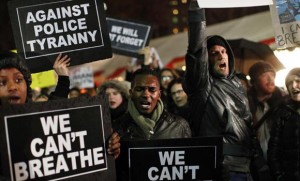
Alvaro: I think that with regards to “articulation” the key is really to understand the structural function of anti-blackness (or what drawing on Frantz Fanon we could equally call blackness “from the eyes of the white man”) in the U.S. That is, if we imagine blackness as about “race” in a strict sense then anti-blackness is about the violent control of black people. Given the truly criminal amount of state violence that has been and is today directed against black people it would seem this definition of anti-blackness should be a forgone conclusion. But I think this is a mistake. It seems to me rather, that anti-blackness as manifested through physical violence on black bodies actually functions as the limit point of possibility for our society as a whole, regardless of “race.” That is, anti-blackness is the self-disciplining mechanism by which this society is taught to turn its back on the very possibility of alternative egalitarian social structures—to see those alternatives as mere anarchy and chaos. Thus, when Black people begin to move against the violence directed at them, to question the systemic nature of that violence, it has the unique and totally disproportionate (in numerical terms) power to re-open the possibility for everyone in this society to articulate in a much less ambivalent manner their own struggles as a challenge not just to the discontent arising from the particularities of their immediate situation but also as against the inegalitarian structure as such. This was true after the self-emancipation of the slaves in the 19th century, it was true during the Black revolt of the 1960s and 70s, and I think it will prove to be true today. So, in some ways I want to say that the challenge to anti-blackness doesn’t need to be articulated to other struggle, rather it’s the one struggle in this country that functions as the pre-condition of possibility for articulation as such. This of course leaves all the practical problems of “articulation” (among particular issues, people, and organizations) unresolved but perhaps we can learn from these past movements that the measure of their strength depended directly on how well they grasped this point.
Michael: And thus the practical questions of organization and articulation would be unsolvable without the recognition first of this theoretical and institutional point. One obstacle, you are posing for the movements, then, is that they be reduced simply to a question of police violence against blacks from the more general framework regarding the social and political role of blackness. And yet access to grasping that theoretical point is only provided by the specific struggle regarding violence against black bodies.
Alvaro: Yes, exactly. Anti-blackness is not just about control over Black people and yet there is no such thing as a movement against anti-blackness that is not led by Black people and with the very immediate aim of ending violence against Black bodies. Perhaps this goes back to your first point regarding the fact that this movement feels different due to the fact that Black people are at its center. Maybe this recognition of the function of anti-blackness gives us the tools to identify the key limitation of movements like Occupy or even the migrant marches of 2006 (although the latter in my eyes was of far great consequence), in that they weren’t able to attack the question of anti-blackness and that then limited them to a certain ambivalence toward the structure as a whole.
I also think we might put the rise of Obama in this context, it seems to me that back in 2006-7 we were at a very similar point of discontent and I feel that the enthusiasm for a phenotypically Black president was (at least in part) a confused attempt to acknowledge this link between a challenge to anti-blackness and structural change. Of course all of this has ended in deep disappointment for those that supported him given the use of the phenotypical Blackness of a political figure as a stand in, making it appear that these issues had already been addressed without ever having to deal directly with the inequality underwritten by the continued centrality of anti-blackness and the very real violence against black communities that it requires.
Michael: We should also recognize a series of other obstacles that block the further development of this wave of protest. One external obstacle is the killing of two police officers in New York on 20 December. Public support of the movements had been very widespread, including celebrities, but the police killings have, at least temporarily, dampened the spread of the movements and the public support for them.
An important internal obstacle I see in this wave of protests is that the rejection of traditional forms of leadership tends to get confused with a refusal of organization as such. It is often taken for granted in the US that black politics, even more than in other domains, is dependent on charismatic male leaders: the history of black politics is the history of great men, Martin Luther King, Malcolm X, and so forth. Young activists today, however, strongly refuse the role of the charismatic leader. In Ferguson and throughout this wave, potential leaders have been kept on the sidelines.
Rejecting traditional leadership, however, does not mean that less organizational work is needed – on the contrary! It requires more organizational work. We are in a phase, it seems to me, in which traditional forms of organization are being rejected and new ones are not yet formed. This is as true of the wave of protests emanating from Ferguson as it is for a variety of other recent social movements including Occupy and the alterglobalization movements.
Alvaro: It’s been very interesting to watch discussions regarding these very topics unfold in the last few weeks. I get the sense that it’s almost as if through these recent events we are slowly having to relearn the difference between, a protest, a moment, a movement and an organization—things that in the last few decades were embarrassingly conflated. I don’t think this will be an easy road for two very specific reasons: First, the near total conflation in this country between “politics” and electoralism that has had the consequence of subordinating all efforts at autonomous political organizing to the whims of the Democratic Party (the Democrats will no doubt seek to capitalize upon and simultaneously neutralize this latest wave of protests as they did the migrant marches of 2006) and thus erasing even the know-how necessary for organizing beyond the electoral; Second, the confusion today between political effectivity and visibility, particularly visibility on social media. It might seem obvious and yet today it certainly has to be said; no number of hashtags, likes, or flashmobs amount to a moment, a movement, and much less an organization. It seems to me that breaking with these two obstacles will be key in overcoming the impasse of innovative organizational forms that you point out. But given the fact that every new police shooting seems to only further confirm the general sense of intolerability I think there may be some time to move beyond these issues.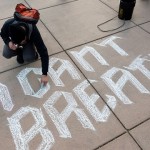
Michael: Another internal obstacle to this wave of movements is an incompatibility or conflict among different modes of militancy. Sometimes this incompatibility is posed in terms of violence and nonviolence, but it really has to do with different tactics regarding the engagement with the police and responses to police aggressions. This tension or conflict is not new, of course. In the alterglobalization movement it was often expressed in terms of the black bloc versus peaceful protestors. In the current wave of protests, however, the tension takes a different inflection because of the racial divide. People of color are seldom those who fight with the police in the streets and they are the ones most vulnerable to police violence and arrest at demonstrations. The danger is that white activists engage in a conflict with the police and black activist are the ones who most suffer.
These obstacles, of course, are by no means fatal. The question remains, however, even if the wave of protests emanating from Ferguson does not simply stall and is able to overcome these obstacles, what could it become?
Alvaro: In order to consider where this all might go I think it’s important to return to the point that the most visible side of these protests seems to be only the tip of the iceberg of a more generalized insubordination of a black and brown subproletariats intimately intertwined with the crisis of neoliberalism. Thus, many have proposed the need for these protests to move beyond “race” in order to discover it’s “class” basis—I fear it is exactly this type of analysis that will lead us to a dead end. The potential for this movement arises exactly from the incredibly weak link (created by racism) that African Americans and Indigenous and Black descendant Latinos have had with regard to the “working class” in the U.S. (what is called the “last ones hired, first ones fired” phenomena). Whereas “working class” politics in the U.S. has concentrated almost solely on the redistribution of wages that assumes the continued expansion of capitalist value (whether in the garb of “reform” or “revolution”), the strength of Black radicalism in the U.S. seems to be directly tied to its ability to look beyond redistribution and therefore reopen the question of “value” in it’s larger social sense. That is, whether we are talking about Martin Luther King’s “beloved community” or the Black Panther’s “inner-city communes” what I have learned from these visions is that their strength is tied to their ability to put capitalism into question through three simultaneous strategies: the autonomous fulfillment of material needs (as Malcolm X was fond of saying, “whatever is done for us should be done by us”), the creation of new forms of institutional life, and finally through these, the production of new values that seek to challenge rather than redistribute the “value” at the heart of capitalist production. In my eyes then whether this movement has a future depends directly on our capacity to look back and assimilate these historical lessons that Black radicalism in the U.S. can teach us all at the very moment when the further expansion of capitalist value seems (temporarily?) to be facing very real structural limits.

